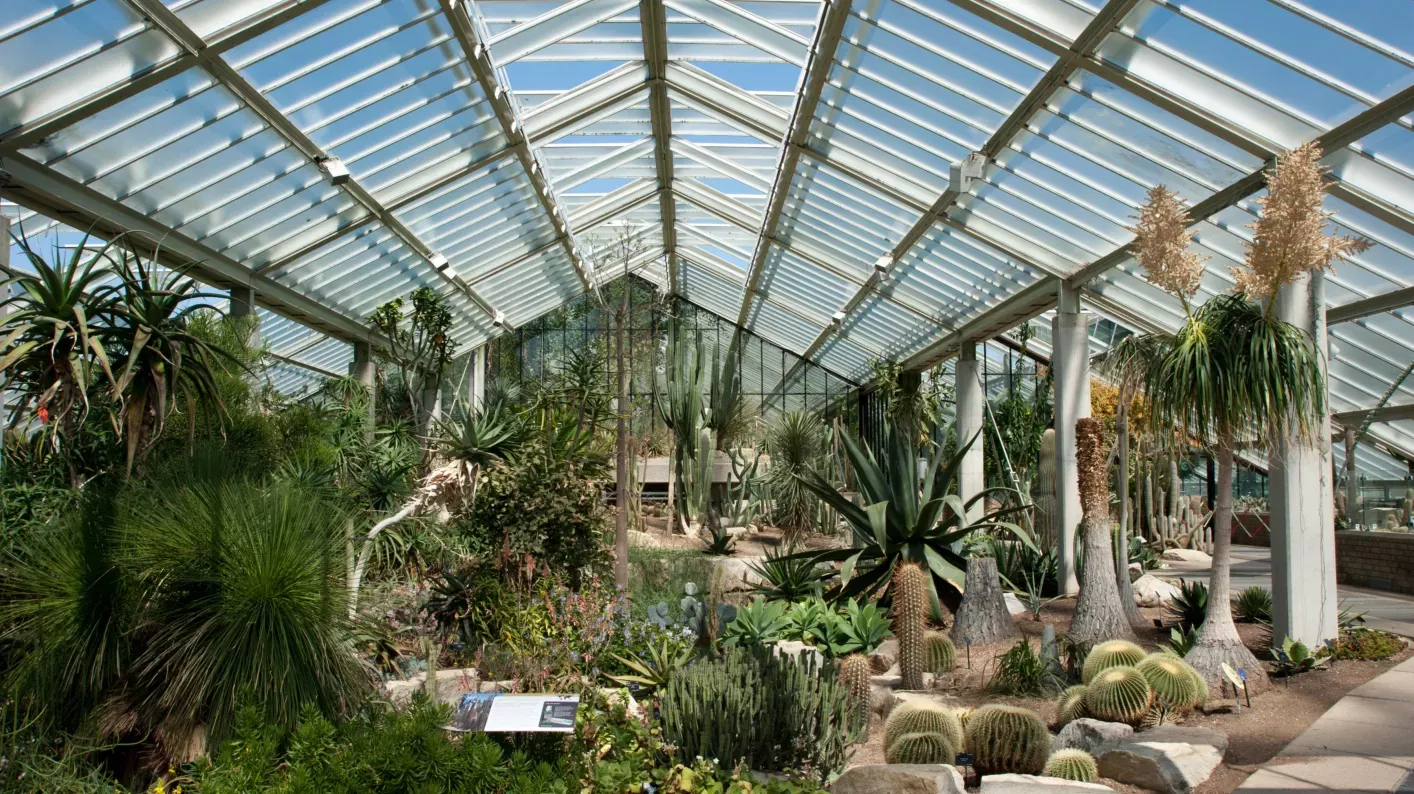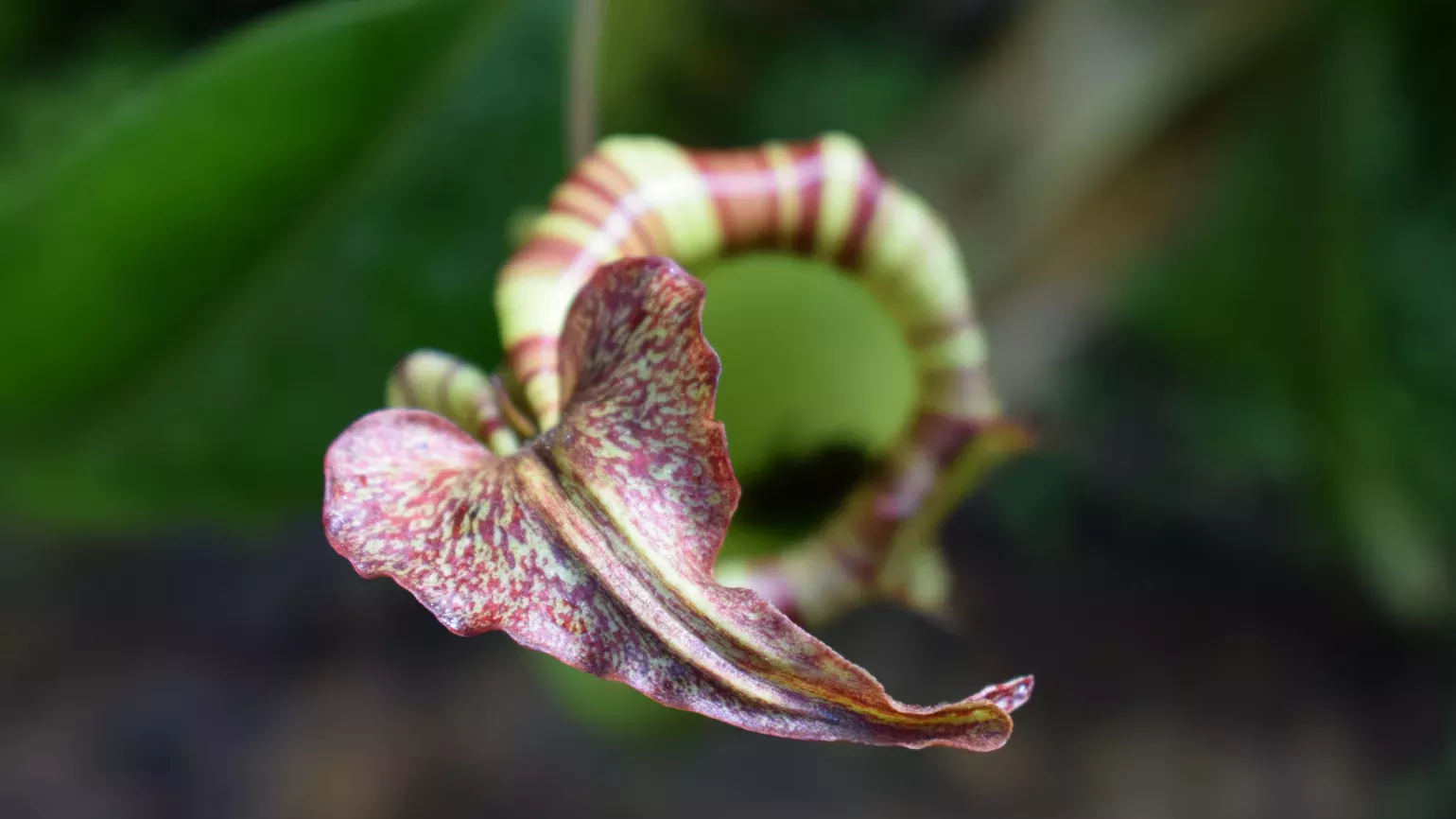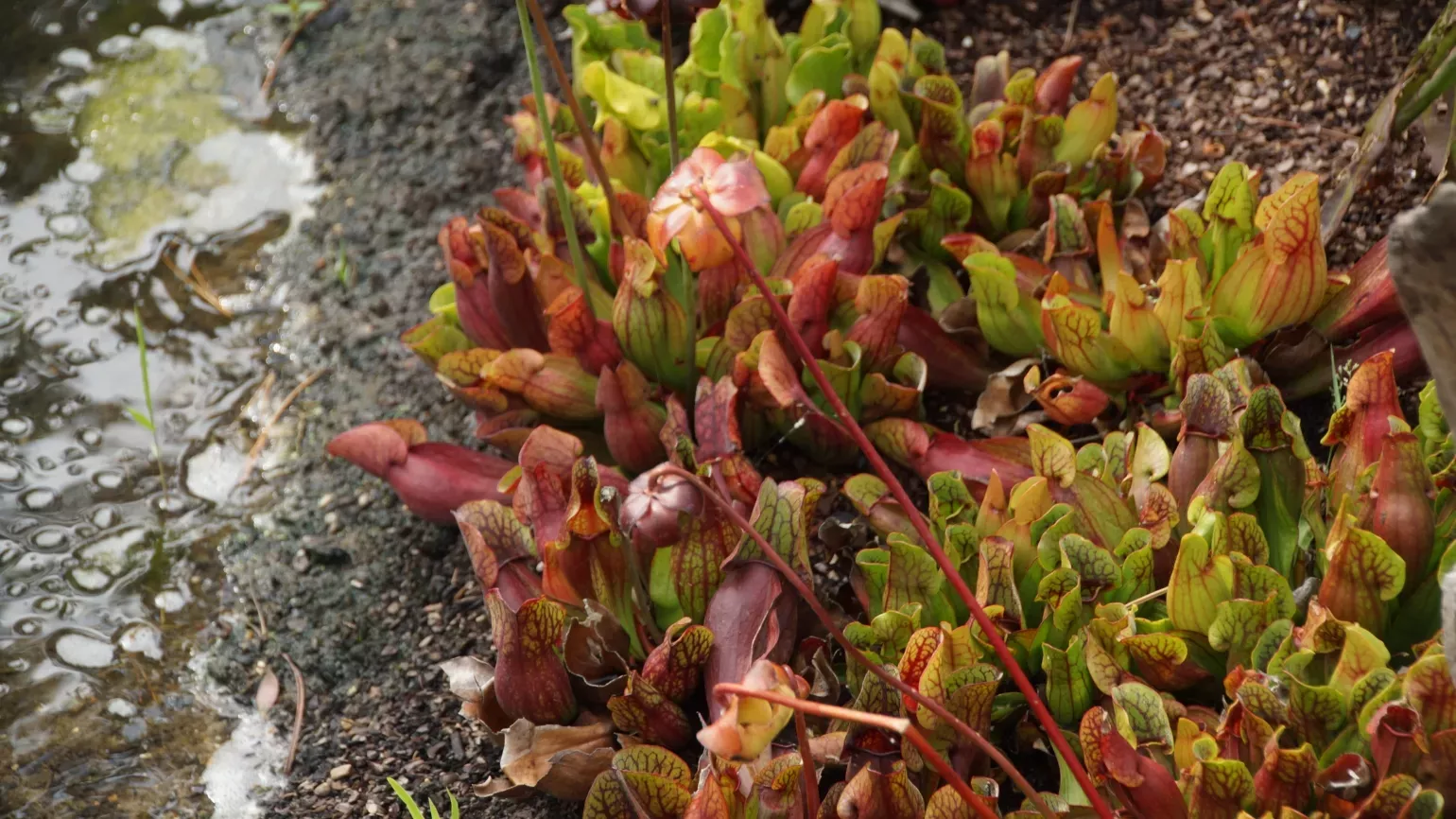
Kew Gardens
Princess of Wales Conservatory
Travel the world through ten different climate zones in the Princess of Wales Conservatory.
See the Conservatory.jpg5fcd.webp)
While most of our carnivorous plants live behind the scenes in Kew's Tropical Nursery, you can still discover the magic of flesh-eating plants dotted around the Gardens.
You’ll find some of these weird and wonderful carnivores in a dedicated zone in the Princess of Wales Conservatory, while gorgeous purple pitchers also thrive in the Rock Garden and the Alpine House.
From Venus fly traps to pouting pitchers, carnivorous plants have developed remarkable adaptations to help them master the art of eating other living things.



These plants generally live on nutrient-poor soils, so the prey they trap helps to provide them with nutrients they would otherwise find hard to obtain.
The Venus fly trap (Dionaea), for example, has toothed leaves that snap shut and trap its unsuspecting prey.
Pitcher plants (such as Sarracenia, Cephalotus, Darlingtonia and Nepenthes) lure unwitting insects into their smooth, waxy interior walls with an intoxicating smell and bright colour.
Sometimes seen as ‘beautiful murderers,’ they hail from many different parts of the world – whether that’s Australia, Brazil or even as close to Kew as Dorset.

Kew Gardens
Travel the world through ten different climate zones in the Princess of Wales Conservatory.
See the Conservatory.jpga320.webp)
Kew Gardens
The evolutionary journey of these remarkable pitcher plants.
The purple pitcher plant
Kew Science
How 12 new species of carnivorous pitcher plants were discovered in our Herbarium.
New carnivorous species